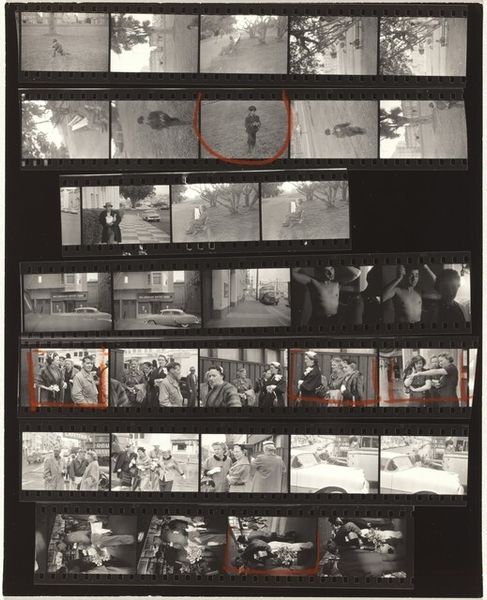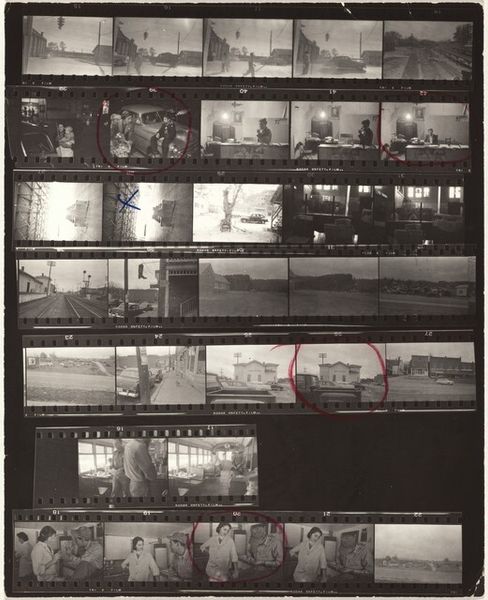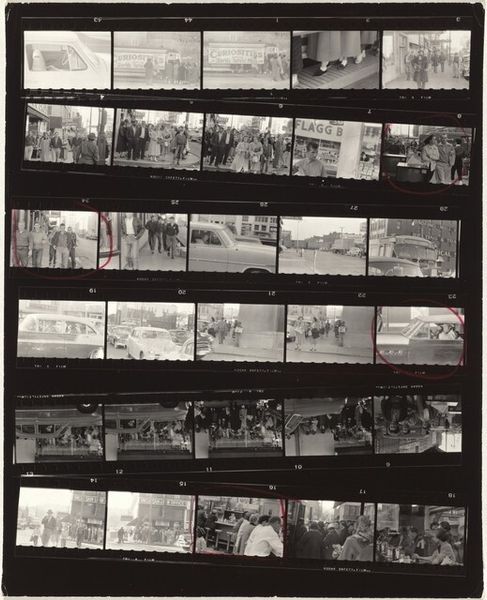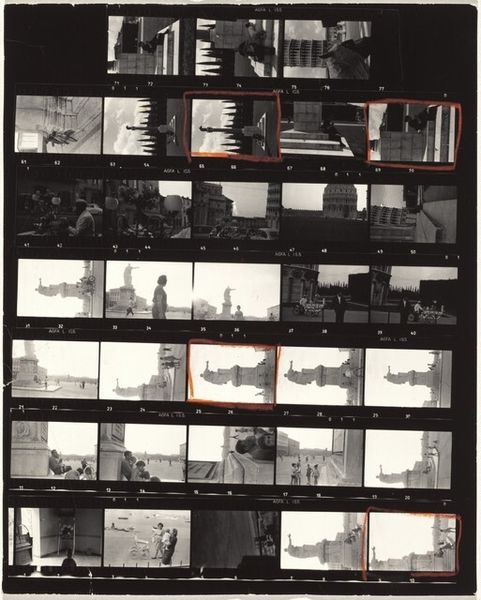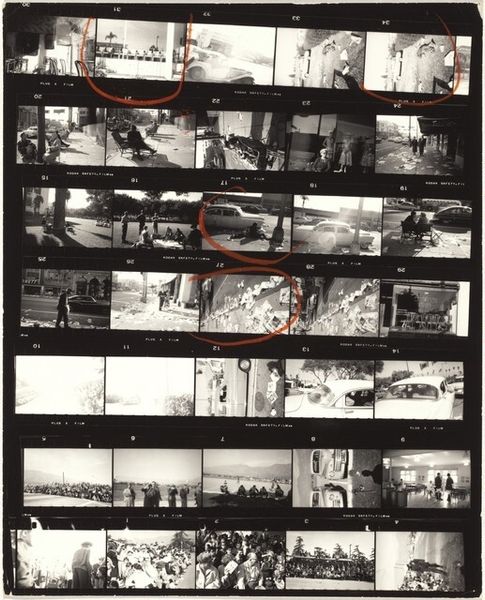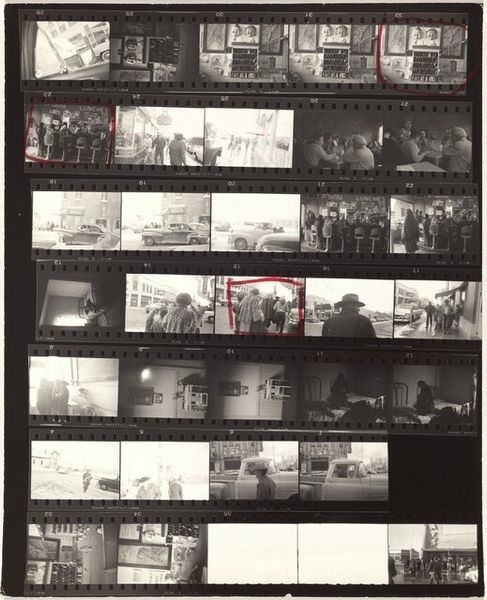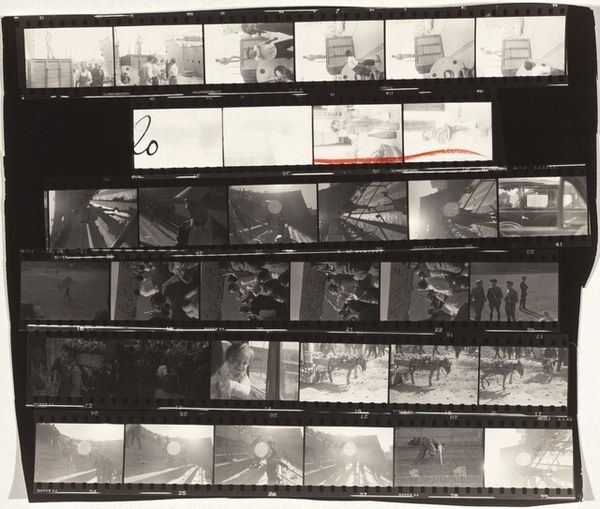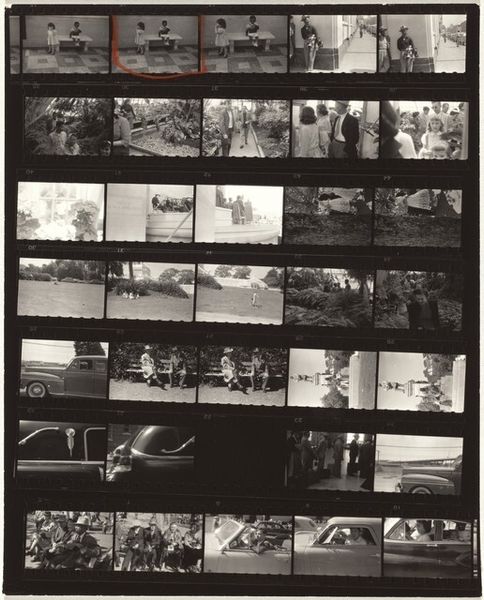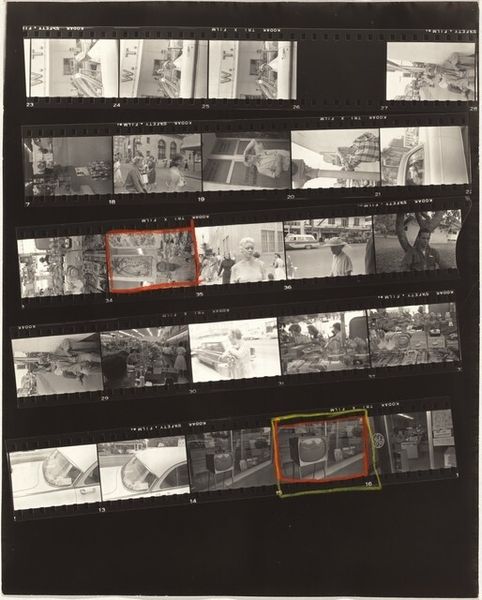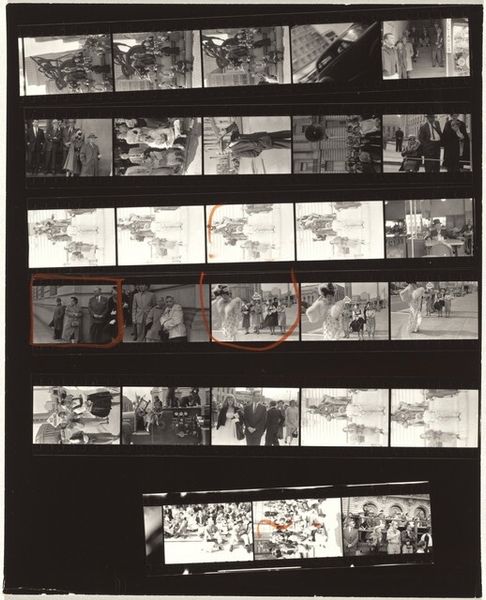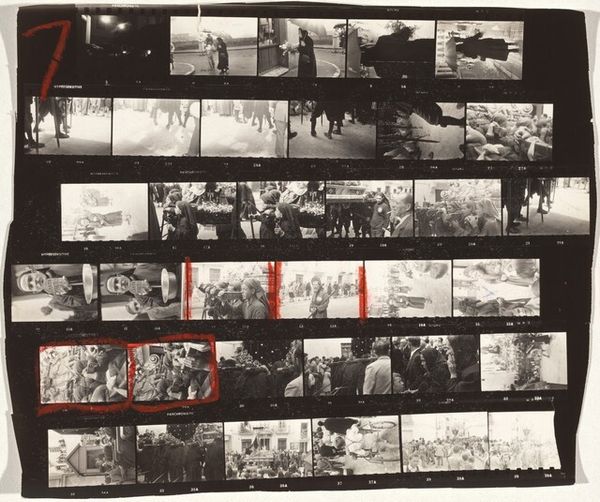
Guggenheim 397--Kingman, Arizona, Hoover Dam, and Las Vegas, Nevada 1955
0:00
0:00
photography, gelatin-silver-print
#
portrait
#
landscape
#
street-photography
#
photography
#
gelatin-silver-print
#
pop-art
#
modernism
Dimensions: overall: 25.3 x 20.4 cm (9 15/16 x 8 1/16 in.)
Copyright: National Gallery of Art: CC0 1.0
Editor: Here we have Robert Frank’s "Guggenheim 397—Kingman, Arizona, Hoover Dam, and Las Vegas, Nevada", a gelatin-silver print from 1955. It's a contact sheet, full of small images, like film stills, creating a fragmented narrative. What's your interpretation of how Frank portrays America here? Curator: The contact sheet itself becomes a commentary. By displaying these seemingly unedited moments, Frank rejects the curated, polished image typically presented in media and art. Consider the cultural context: 1955, post-war boom, but also simmering social unrest. What message do you think he's sending? Editor: Perhaps he's highlighting the ordinary or overlooked aspects of American life. It feels like he's questioning the idealized image, focusing instead on everyday encounters. The landscapes and portraits, though disparate, feel equally weighted. Curator: Precisely. And how does that contrast with the prevalent imagery of the time, often promoting consumerism and a sanitized version of reality? This challenges the power structures that dictate what’s deemed worthy of representation. The juxtaposition of mundane and iconic, like Hoover Dam, asks us to reconsider these symbols. What does progress *really* mean? Editor: It's like he’s deconstructing the American dream. Instead of a clear narrative, we're left with disconnected observations. I see social commentary but with ambiguity. Curator: Exactly! And that ambiguity is key. Frank provides no easy answers, instead pushing viewers to confront the complexities and contradictions inherent in American society at the time, and even today. Editor: I hadn’t considered how the format itself—the contact sheet—plays such a significant role in shaping the narrative. Curator: These individual frames, presented together, compel us to consider how museums, galleries, and socio-political forces actively frame the narrative. It all makes you wonder whose story gets told and why. Editor: I’m definitely leaving with a deeper understanding of how Frank uses visual language to critique societal norms. Thank you. Curator: It was my pleasure. Reflecting on the historical and social forces helps illuminate these seemingly disconnected observations and reveal underlying anxieties in America.
Comments
No comments
Be the first to comment and join the conversation on the ultimate creative platform.
